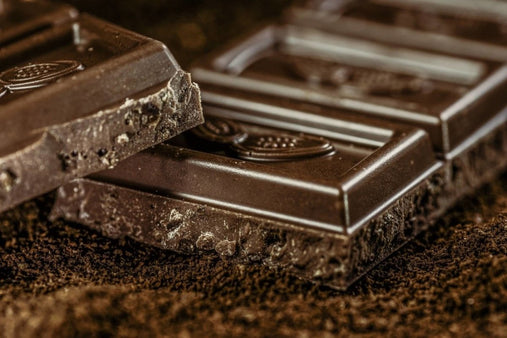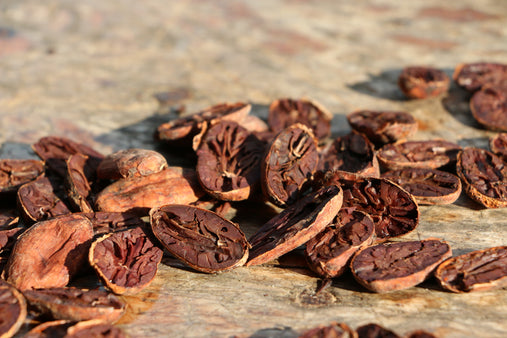
8th of June 2020
A Brief Introduction to Cannabinoids
At first glance cannabinoids sound like they must come solely from the cannabis plant, however the name is somewhat deceiving. Cannabinoids are in fact found in a number of plants. But they acquired this name because the chemical structures were found while researching the cannabis plant.
The cannabis plant contains over 100 different cannabinoids, yet cannabinoids are actually a naturally occurring compound (or chemical) that can be found in a variety of other plants. Interestingly, these compounds can also be produced endogenously by the human body.
We can trace the discovery of cannabinoids back to the groundbreaking research of the cannabis plant (and its effects on the human body) by Dr. Raphael Mechoulam in the 1960’s. Dr Mechoulam was the first to synthesize the main psychoactive chemical (or cannabinoid) in the cannabis plant, which is now known as Tetrahydrocannabinol (THC). His research later inspired the discovery, in the 1990’s, of endocannabinoids (cannabinoids produced by the body) and ultimately the discovery of the body’s own sensory system that interacts with cannabinoids—the endocannabinoid system (ECS).
In simple terms: cannabinoids are natural chemicals found in plants and the human body, which are able to interact with the body via a network of receptors called the endocannabinoid system. The endocannabinoid system is the body’s equivalent of the conductor in a symphony—it manages the overall wellbeing of the body (or homeostasis) and its multitude of systems.

Cannabis and Cacao
One of the reasons we write about cannabinoids and the endocannabinoid system is that two of our favorite functional plants are Theobroma cacao and Cannabis sativa, which both produce cannabinoids and terpenes. These two plants have also been used for literally thousands of years by ancient cultures for their impressive health benefits and ability to transport us to elevated states of being.
Cannabinoids and Their Interaction with the Endocannabinoid System (ECS)
The endocannabinoid system (or ECS) is hailed by some medical professionals as one of the most promising areas of medical research into the way our body self regulates. The ECS represents an expansive system of receptors found in practically every part of our body (including the brain, nerves, skin, immune cells, bone, fat tissue, liver, pancreas, skeletal muscle, heart, blood vessels, kidney, and gastrointestinal tract), with the main task of maintaining bodily homeostasis.
As such, it is believed that ECS is responsible for regulating a wide range of mood states, including pain, memory, mood, appetite, stress, sleep, metabolism, immune function, and reproductive function, to name just a few. It has been shown that not only our diet but also our aerobic activity has an effect on the function of our ECS and our overall "endocannabinoid tone."
Lock and Key System
The ECS interacts with cannabinoids in what can be described as a "lock and key system." This means that specific cannabinoids function as the key to unlock different mood states. They do this by way of stimulating, antagonizing, or modulating our endocannabinoid system.
In simple terms: cannabinoids and endocannabinoids interact with our endocannabinoid system in a way that ultimately drives change in our mental or physical health and mood.
Cannabinoids in Cacao
It turns out that the human body produces at least two known cannabinoids (or endocannabinoids), which have been named anandamide (AEA), the so called “bliss molecule”, and 2-arachidonoylglycerol (2-AG).
A significant range of cannabinoids can also be found in plants. This shouldn’t be surprising, given that plants have been our primary form of medicine for centuries. Cannabinoids are known to be found in the cannabis plant. We are most familiar with Tetrahydrocannabinol or THC and Cannabidiol or CBD, but there are over 100 other cannabinoids in the cannabis plant. Other plants known to contain cannabinoids include carrots, black pepper, ginger, kava root, maca root, New Zealand liverwort.
Dr Ethan Ruso’s (one of, if not the, authoritative medical researcher on the ECS) has published research that suggests that contrary to popular belief, there are no endocannabinoids in chocolate, but cacao (the raw material for dark chocolate) does contain N-linoleoylethanolamide and N-oleoylethanolamide. These two compounds produce something called "fatty acid amide hydrolase" (FAAH) inhibition.
FAAH is one of two principal enzymes that are responsible for the metabolism of AEA and 2-AG, the two endocannabinoids produced by our body.
In simple terms: dark chocolate is believed to have little (or perhaps no significant) levels of anandamide. But it does contain N-linoleoylethanolamide and N-oleoylethanolamide. These two compounds inhibit the metabolic breakdown of anandamide, the “bliss molecule.” This improves the body’s endocannabinoid tone. It may also be responsible for inhibiting the breakdown of other cannabinoids such as CBD and THC.

Full-Spectrum & Entourage Effect
Many consumers are becoming familiar with the reported benefits of "full-spectrum CBD." This is an oil or a product that contains all of the cannabinoids and terpenes that naturally occur in the plant, as opposed to isolated components of CBD.
There is still a lot of research to be done about the medicinal and functional benefits of full-spectrum cannabis products, and much of that centers on the phenomenon referred to as the entourage effect. This means that cannabinoids work in concert with each other and other substances (such as terpenes) to enhance the therapeutic benefit or desired mood state. An analogy might be that certain substances (e.g. terpenes) can act as “tug boats” to direct cannabinoids to specific receptors in the ECS that are designed to modulate a desired mood state (such as energy, relaxation, etc.).
Take a look at another one of our articles about the many psychoactive compounds found in cacao, written by my colleague. It takes a look at the terpenes that can be found in dark chocolate and how they may enhance the functional benefits of CBD. You can also find a list of other plants that engage the endocannabinoids system in this comprehensive article by Fundacion Canna.
In simple terms: The entourage effect may be a way of combining cannabinoids with other substances, such as terpenes, to biohack your body’s homeostasis and achieve a desired mood state. For example, certain cannabinoids consumed in concert with certain terpenes could help you achieve an elevated state of relaxation, whereas another combination might help you achieve an elevated state of creativity.

Several Other Important Considerations When Consuming Cannabinoids
There are a few other relevant topics when it comes to how we consume cannabinoids—particularly those derived from the cannabis plant.
-
Bioavailability — Regular CBD oil is not well absorbed by the body because it's fat-based, and therefore not water soluble. In fact, 90% of what is eaten can be destroyed by the liver and stomach acids before it's even able to be used. This is because the body doesn’t absorb fat molecules, and must encapsulate them in water inside the gut before it can be absorbed. That means that if you orally ingest 20mg of regular CBD oil, perhaps only 2mg of CBD enters into the blood stream, and even less if the CBD is isolated. Will Kleidon, founder of Ojai Energetics, says that consumers are paying for 100% of the CBD and only getting 10% of the potency, while waiting 30 minutes before any benefits occur. Ojai Energetics has patented technology that reportedly enhances bioavailability by more than 20x the normal oils.
-
Dosage — The team at Ojai Energetics argue that “there are multiple bell curves of efficacy for using a full spectrum CBD oil, and dosage amount changes daily based on oxidative stress levels. With a fat based CBD, you are shooting in the dark to find the ideal dosage. This is why many people find regular CBD oils suddenly stop working after a while, as in reality, they may actually need less, not more for proper dosage.” Check Project CBD’s guide to dosing for more information.
-
Safety — Research is still being conducted into the potential side effects of consuming cannabinoids such as CBD. Research published in 2019 linked a CBD-based treatment (for children with epilepsy) to liver damage., Perhaps related, on many occasions the cannabis plant has been deployed in the phyto-extraction of heavy metals from contaminated soils. It has the ability to extract contaminants such as heavy metals, radioactive elements, pesticides, herbicides, fungicides, explosives, and fuels. The risk that cannabis derived products may contain high levels of toxins means that it's crucial that you only consume cannabis products that have full batch-level traceability. It is also important to ensure the cannabis has been grown organically, and that the finished product was tested at an independent laboratory for any traces of heavy metals or other pollutants. The producer should provide easy access to the published lab results.

Why Haven’t We Heard More about the ECS in Medical Literature?
Dr. Ethan Russo states “despite its seeming ubiquity, and obvious importance as a homeostatic regulator of human physiology, the ECS topic receives short shrift in contemporary medical education, if mentioned at all. This educational deficit, born perhaps of lingering prejudice towards a plant called cannabis, must surely end soon, as it is contrary and detrimental to potential significant contributions to public health.”
Conclusion
Cannabis-based products, such as CBD, are increasingly in demand for their purported functional benefits and health properties. Dark chocolate contains a wide spectrum of healthy chemicals which complement the functional benefits of CBD. It has been shown that dark chocolate can inhibit the breakdown of endogenous anandamide in the body and may also inhibit the breakdown of other cannabinoids such as CBD or THC. This means the effect of these compounds are heightened when consumed with dark chocolate.
Another benefit of combining dark chocolate with CBD is the interaction among the various terpenes which are found in dark chocolate, such as myrcene, linalool, and ocimene. The combination of terpenes in dark chocolate and CBD may contribute to what is referred to as the entourage effect. More research is needed to explore this interaction.
Personally, I enjoy our T.cacao Organic 100% Cacao Powder as a hot beverage with a teaspoon of CBD-infused coconut oil — made by our friends at Ojai Energetics. A hot mug of cacao and a dash of full-spectrum CBD in the afternoon provides me with a soothing & sustained energy release that helps me stay focused until the end of the work day.




